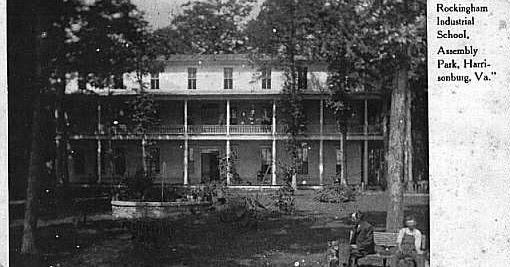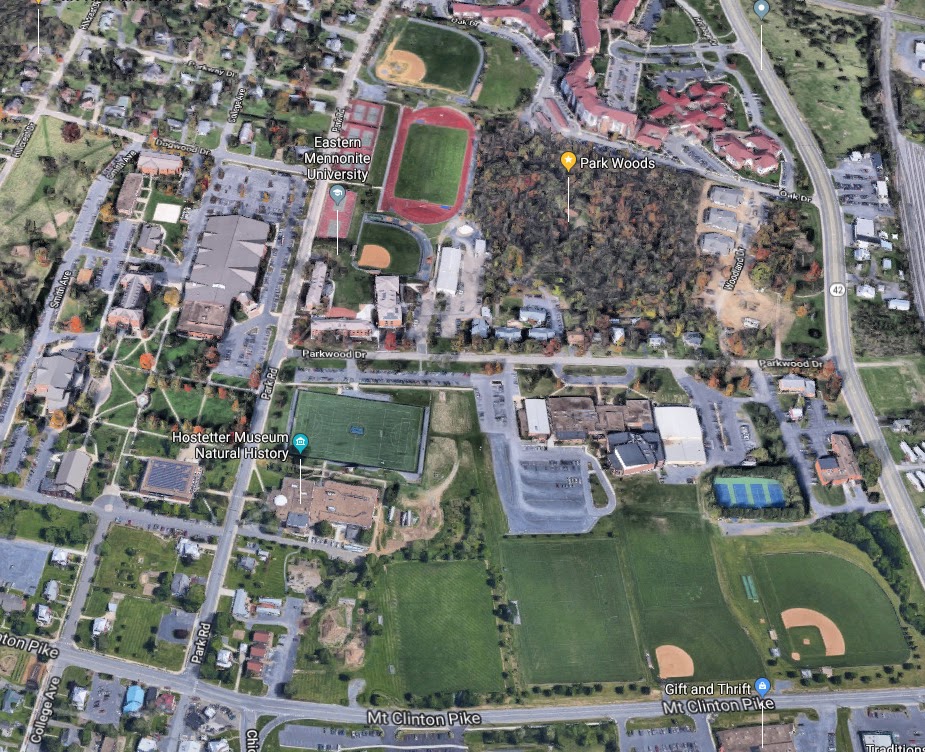Park Woods Preservation
Park Woods is "one of the last woodland areas in northwestern Harrisonburg" and home
to 200-year old oak trees. It also has a long history of bringing people in the community
together.

Park Woods is an urban, oak-hickory forest approximately 10 acres in size that holds
a special place in the cultural, and social history of EMU and surrounding institutions.
The community and students around EMU have identified the need to preserve, conserve,
and restore the forest and its cultural heritage.

Park Woods is located in the northeast corner of campus, close to Park Woods apartments and EMU's physical facilities offices. The space is unique in that it is used by multiple generations of people, from children in school to adults in retirement.

While Park Woods is owned by Eastern Mennonite University, it is also used by neighboring Eastern Mennonite School (K-12) and Virginia Mennonite Retirement Community.

Did you know...
All the trees in Park Woods were measured and mapped by EMU professor emeritus Dr. Kenton Brubaker and his students in 1999! In 2023 student and professors from EMU started working to map and update this tree data.
Students from both EMU and Eastern Mennonite School use Park Woods to study ecology and forestry. Here, EMU student Jack Hummel weighs a White-footed mouse as part of a mark recapture study.
Ecology of Park Woods
This small urban forest offers many gifts in terms of water filtration, carbon sequestration, an abundance of flora and fauna, and the potential to provide food.
When walking through the woods on the trail loop, you might see towering white and red oak trees, shrubby spicebush, bumpy hackberries, striped black cherry trees, hearty walnut trees, and elegant ash trees. You might notice an abundance of squirrels and hear blue jays, robins, cardinals, chickadees, sparrows, tufted titmice, wrens, starlings, and maybe even a mockingbird.
If you gently lift a rotting log, you may find several insects and maybe even a salamander!
In the spring, you are greeted by wildflowers, like Crocuses, Daffodils, Trout lilies, Bloodroot, Trilliums, Mayapples, Quaker Ladies, and Lilies of the Valley.

Park Woods is teeming with life, however, the overall health of the forest is declining, and the functionality of the forest has begun to suffer. Current problems affecting Park Woods most heavily are the presence of the Emerald Ash Borer, the overabundance of invasive species such as English ivy and Japanese Honeysuckle, and the movement of stormwater through the woods.
Did you know...
Park Woods forms the headwaters of Black Run, the local stream that flows through
downtown Harrisonburg. This water eventually flows into the Shenandoah River and ultimately
into the Chesapeake Bay.


